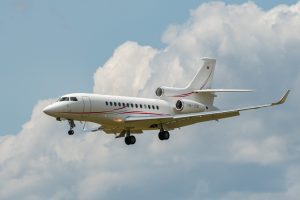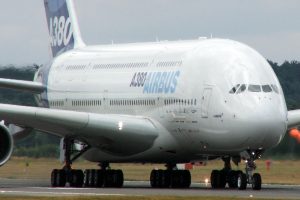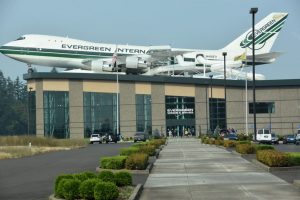GEO_FS COM Is A Game Changer For Pilots
 In the aviation industry, the need for accurate, real-time geospatial data has never been more critical. As pilots navigate complex airspaces and rapidly changing weather conditions, the tools they use for planning and executing flights become vital for ensuring safety and efficiency. One of the most powerful platforms available today is GEO_FS COM. This article explores the various applications of GEO_FS COM, highlighting its significance in aviation through detailed case studies.
In the aviation industry, the need for accurate, real-time geospatial data has never been more critical. As pilots navigate complex airspaces and rapidly changing weather conditions, the tools they use for planning and executing flights become vital for ensuring safety and efficiency. One of the most powerful platforms available today is GEO_FS COM. This article explores the various applications of GEO_FS COM, highlighting its significance in aviation through detailed case studies.
Understanding GEO_FS COM
GEO_FS COM is an advanced geospatial framework that enables pilots and aviation professionals to manage, visualize, and analyse a wide range of geospatial data. This includes real-time weather information, air traffic data, aeronautical charts, and terrain maps. The platform integrates these datasets into a single, user-friendly interface, providing pilots with the tools they need to make informed decisions.
Application areas of GEO_FS COM for pilots
1) Flight planning optimisation
Effective flight planning is crucial for ensuring safe and efficient operations. GEO_FS COM plays a vital role in optimising flight plans.
Case study: Commercial airline flight planning
Consider a commercial airline preparing for a transcontinental flight. Using GEO_FS COM, the flight planning team accesses real-time weather data, which reveals a developing storm system along the originally planned route.
By utilizing the platform’s route analysis feature, they can visualize alternative routes that avoid the storm, taking into account fuel efficiency and air traffic control constraints. This adjustment not only ensures passenger safety but also minimises delays and additional fuel costs.
2) Real-time weather monitoring
Weather conditions can change rapidly, and having access to real-time updates is essential for pilots.
Case study: General aviation pilot
A general aviation pilot preparing for a weekend flight relies on GEO_FS COM for weather updates. As they monitor the platform, they notice that severe weather is moving into their intended flight path.
By using GEO_FS COM’s alert system, they receive notifications about the changing conditions, prompting them to delay their departure. This decision, made possible by timely weather data, helps avoid a potentially dangerous situation, demonstrating the platform’s effectiveness in enhancing flight safety.
3) Terrain awareness and navigation
Understanding the terrain is essential for safe flying, especially in mountainous or unfamiliar regions. GEO_FS COM provides detailed terrain maps that help pilots make informed decisions.
Case study: Helicopter rescue operation
During a rescue operation in a mountainous area, a helicopter pilot uses GEO_FS COM to assess the terrain. The platform provides a 3D visualization of the landscape, showing potential landing zones and obstacles.
By analyzing this data, the pilot identifies a safe area to land, facilitating the successful rescue of stranded hikers. This application underscores how GEO_FS COM can enhance situational awareness in critical operations.
4) Airspace management
Navigating through complex airspace is one of the significant challenges pilots face. GEO_FS COM offers tools that help manage airspace effectively.
Case study: Flight operations in busy airspace
A flight operations team at a major airport uses GEO_FS COM to monitor real-time air traffic data. On a particularly busy day, they notice an unusual congestion pattern developing in the approach lanes.
Using the platform, they adjust arrival sequences and communicate with incoming flights, effectively managing traffic and preventing delays. This case highlights how GEO_FS COM can optimise airspace management, improving both safety and efficiency.
5) Emergency response planning
In emergency situations, quick access to accurate data can be lifesaving. GEO_FS COM equips pilots with the tools they need to respond effectively.
Case study: Emergency landing scenario
During a flight, a pilot experiences an engine failure. Utilizing GEO_FS COM, they quickly assess nearby airports and available landing options based on real-time data.
The platform provides critical information on the distance to each airport, current weather conditions, and any active alerts. With this information, the pilot selects the safest landing option, successfully navigating the emergency situation. This scenario illustrates the importance of GEO_FS COM in enhancing emergency preparedness and response.
6) Collaborative tools for flight teams
GEO_FS COM enhances collaboration among flight crews, ground support, and air traffic control, fostering better communication and coordination.
Case study: Coordinated international flight
On an international flight, the crew uses GEO_FS COM to communicate in real time with ground control and ATC. As they approach their destination, they receive updates on runway conditions and gate assignments through the platform.
This streamlined communication allows them to make timely adjustments to their landing approach and taxiing plans, ensuring a smooth arrival. This case emphasises the importance of collaboration in aviation and how GEO_FS COM facilitates it effectively.
7) Fuel efficiency and cost management
Fuel management is a crucial aspect of aviation operations, and GEO_FS COM aids pilots in optimizing fuel consumption.
Case study: Corporate jet flight
A corporate jet team uses GEO_FS COM to analyze their flight profile before a long-distance trip. By evaluating the optimal altitude and speed for fuel efficiency, they adjust their planned route to minimize fuel consumption.
As a result, they achieve significant cost savings on fuel, demonstrating how GEO_FS COM can enhance financial efficiency in flight operations.
8) Regulatory compliance and safety management
Ensuring compliance with aviation regulations is essential for all operators. GEO_FS COM assists pilots in meeting these requirements effectively.
Case study: Safety inspection and compliance
An airline conducting routine safety inspections utilizes GEO_FS COM to maintain records of flight data, weather conditions, and any incidents during flights.
By having this information centralized, they can easily demonstrate compliance during audits. This case highlights how GEO_FS COM simplifies record-keeping and regulatory compliance for aviation operators.
Impactful applications
The applications of GEO_FS COM for pilots are numerous and impactful. From optimizing flight planning and monitoring real-time weather to enhancing terrain awareness and facilitating emergency response, GEO_FS COM serves as an invaluable tool in the aviation industry.
The case studies presented illustrate the platform’s effectiveness in real-world scenarios, demonstrating its role in improving safety, efficiency, and operational excellence. As technology continues to advance, the importance of platforms like GEO_FS COM will only grow, shaping the future of aviation and empowering pilots to navigate the skies with confidence.
By adopting GEO_FS COM, pilots and aviation professionals can enhance their capabilities, ensuring safer and more efficient flight operations. As the industry evolves, the need for accurate, real-time geospatial data will remain paramount, and GEO_FS COM is at the forefront of this critical transformation.










